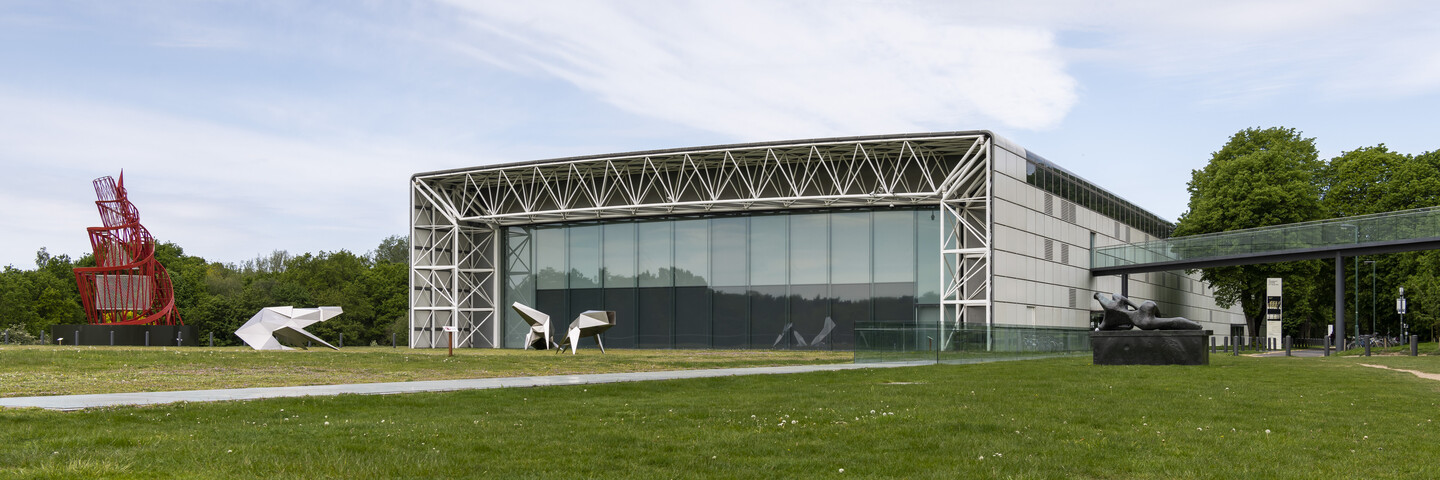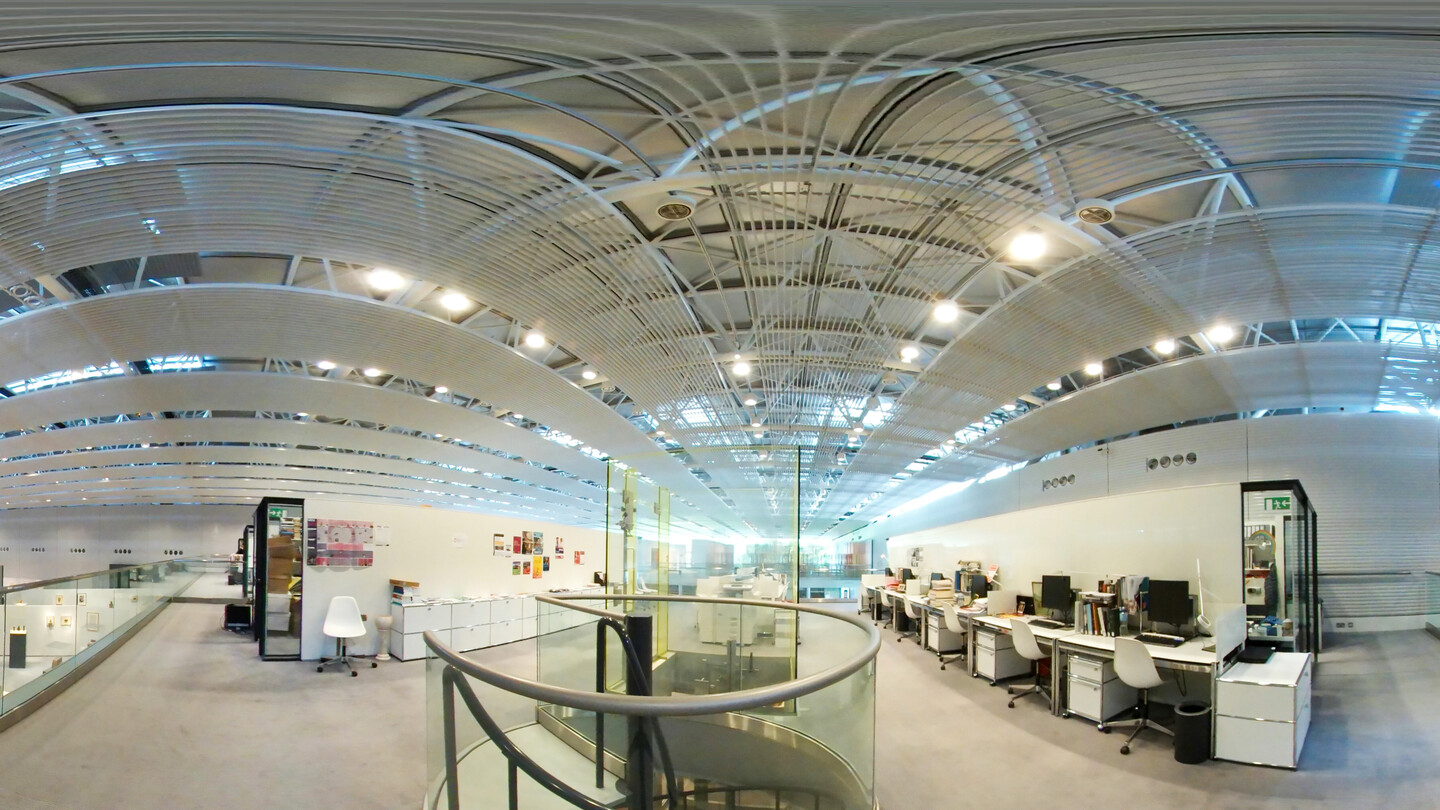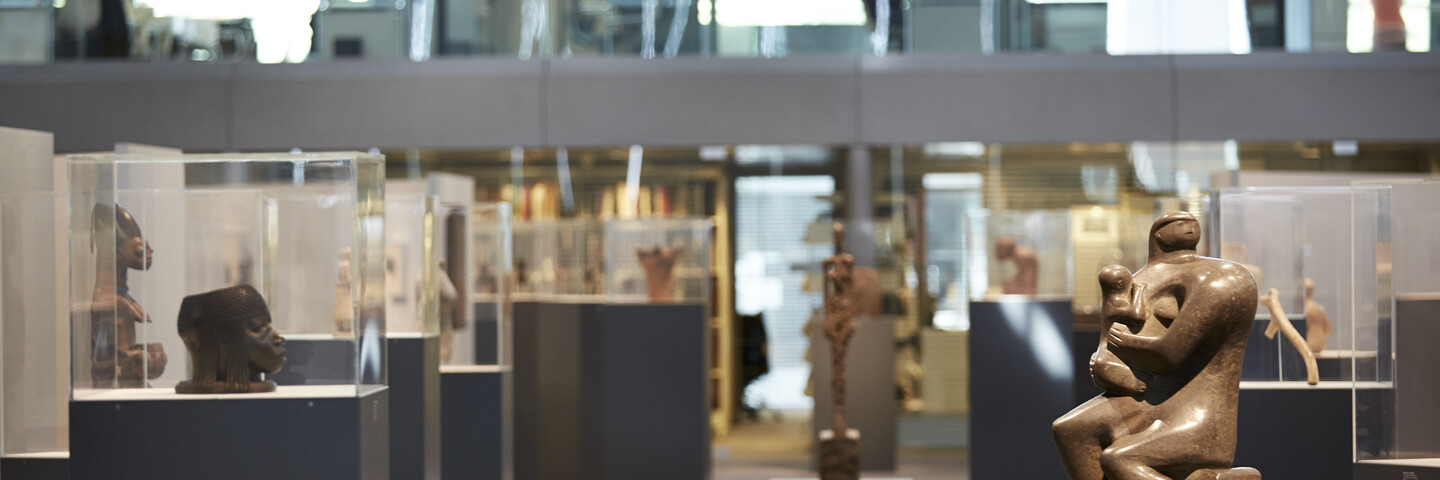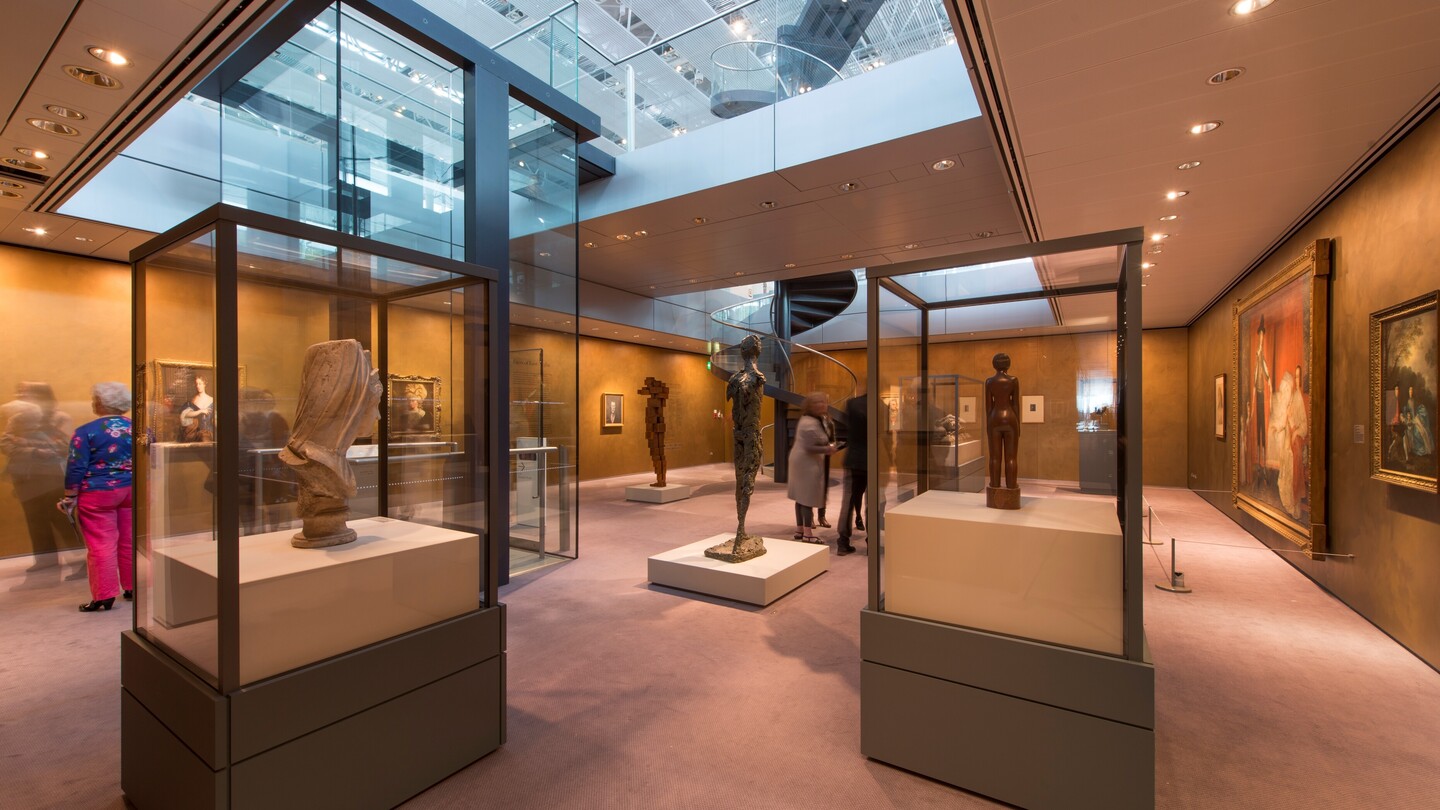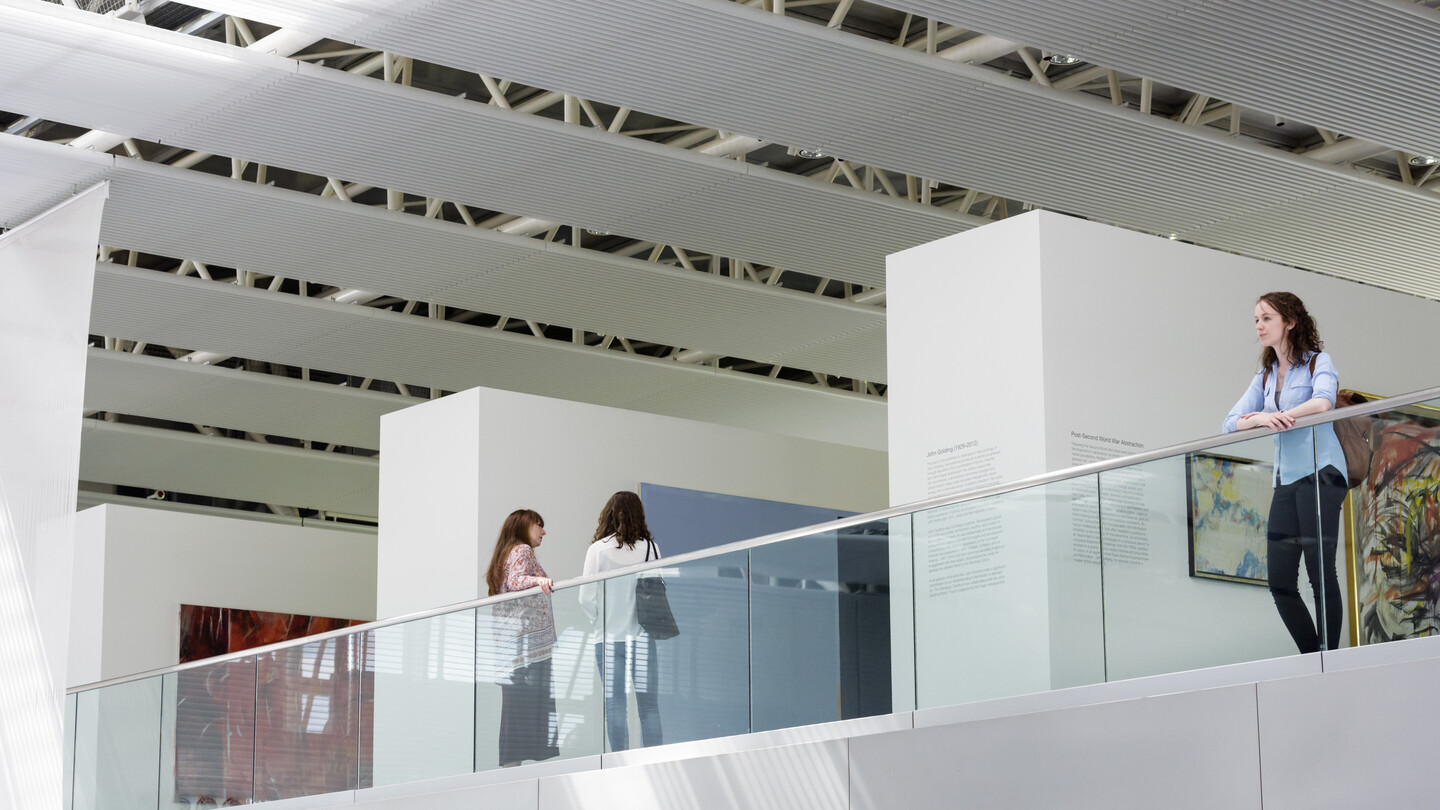-
The Sainsbury Centre
The Department of Art History and World Art Studies is based within the world-famous Sainsbury Centre, designed by Sir Norman Foster. Students benefit from close proximity to a permanent display of hundreds of artworks and artefacts in the main gallery, known as the Living Area, as well as a changing programme of major temporary exhibitions, and an extensive sculpture park.
-
Our Spaces
Our students are encouraged to develop their learning within the dramatic, light-filled space at the heart of the Sainsbury Centre’s west end. The area provides an inspiring place for individual or collaborative work. The department overlooks the lawn and woods behind the Centre. Students and faculty use the common areas for lunch, a quick meeting, or a break from class, creating a space where the community can come together informally.
-
Sculpture Park
Our students have immediate access to the Sainsbury Centre’s extensive Sculpture Park. Set within 350 acres of parkland, the Sculpture Park generates important connections between UEA’s landscape, architecture, and art collections. Starting its life as a collection of sculptures by Henry Moore, the Sculpture Park now includes diverse works by notable artists such as Elisabeth Frink, Lynn Chadwick, Antony Gormley, John Davies, Antony Caro, Ian Tyson, Heather Ackroyd and Dan Harvey. Beyond formal sculpture gardens, the parkland embraces the tranquility of the Broad and River Yare, affording its own perspective on UEA’s modernist architecture designed by leading architects such as Norman Foster, Denys Lasdun and Rick Mather.
-
Young Associates
Our students often get involved with the free creative programme run by colleagues in the Sainsbury Centre: the Young Associates. The Young Associates exemplifies the Centre’s emphasis on making the experience of art dynamic and accessible. Guided by practising artists, the group gathers regularly to explore ideas, develop their curatorial and interpretive skills, and put ideas into practice. The Centre and its collections thereby become the starting point for the Young Associates’ own creative and curatorial projects, a sociable and lively way to gain valuable professional experience too.
-
Our Connections
The department plays an active role in developing meaningful and productive relationships with a range of regional partners. These relationships support the professional development of staff and students, and enable us to provide a range of organized work experience placements. Our partners include the Norfolk Museum Service, the National Trust, the Sainsbury Centre, the East Anglian Film Archive, the South Asia Collection, the Ipswich Museum, the Britten Pears Trust, Hungate Medieval Arts, the Norfolk Archaeological Trust, and many others. Given the art historical, social and environmental relevance of many of their own research projects, our staff play a key role in sustaining partnerships with other museums, universities, and non-academic organisations internationally.
-
Photographic Collection and Archive
Housed in the department of Art History and World Art Studies, the photographic collection contains approximately 150,000 prints and over half a million glass and film negatives dating back to the early 20th century, making it one of the largest archives of its kind in the UK. It is also home to many other collections including rare books, manuscripts, post cards, posters and many other types of art-related documents and ephemera from around the world, providing a valuable resource for research and study.
-
The Robert Sainsbury Library
The Robert Sainsbury Library supports the research and teaching of the Sainsbury Research Unit and is available to all Art History undergraduate and postgraduate students. The Library specializes in the arts and culture of Africa, Oceania and the Americas, including related subjects such as anthropology, archaeology, and museum studies. The Library has nearly 20,000 volumes and a range of journals, which complement the holdings of UEA's Main Library. It is housed in three reading rooms next to the Centre’s ‘Living Area', and offers a quiet, friendly and intimate place to read and research.
